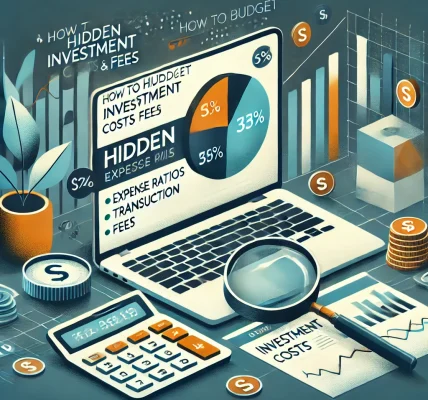📚 Introduction:
Life is unpredictable, and financial emergencies can strike when least expected—whether it’s a sudden job loss, medical emergency, or unexpected home repair. During such crises, managing your finances effectively becomes crucial to avoid slipping into debt or financial instability.
Emergency budgeting is a proactive strategy that helps you adjust your spending, prioritize essentials, and ensure financial survival during tough times. In this guide, we’ll explore how to create an emergency budget, tips to cut unnecessary expenses, and ways to safeguard your finances during a crisis.
🎯 What is Emergency Budgeting?
Emergency budgeting involves making immediate and strategic changes to your budget to align with your reduced or uncertain income during a crisis. It focuses on reducing discretionary expenses and prioritizing essential needs to ensure that you stay afloat financially.
✅ Key Objectives:
- Preserve financial stability during uncertain times.
- Cover essential expenses without relying on debt.
- Avoid depleting emergency savings too quickly.
✅ When to Implement an Emergency Budget:
- Sudden job loss or pay cuts.
- Unexpected medical expenses.
- Economic downturns or market instability.
- Natural disasters or other unforeseen emergencies.
📊 Why Emergency Budgeting is Critical During a Crisis
- Prevents Accumulating Debt:
By cutting non-essential spending, you reduce the need to borrow money. - Ensures Continuity of Essentials:
Allows you to maintain essential services like food, housing, and utilities. - Extends Emergency Savings Lifespan:
Stretching your existing savings can help you navigate a prolonged crisis. - Reduces Financial Stress:
Having a clear plan minimizes anxiety and ensures better decision-making.
📈 Signs You Need to Switch to an Emergency Budget
- You’ve experienced a significant income loss or pay cut.
- Your emergency fund is depleting faster than expected.
- Credit card balances are rising due to reliance on debt.
- You’re unsure how to meet upcoming financial obligations.
🚨 Pro Tip:
Transition to an emergency budget immediately when any of these signs emerge to prevent further financial damage.
🎯 Step-by-Step Guide to Create an Emergency Budget
📝 Step 1: Assess Your Financial Situation
The first step is to take stock of your current financial situation.
✅ Analyze the Following:
- Your current income (if any).
- Total amount in emergency savings.
- Outstanding debts and upcoming obligations.
🚨 Pro Tip:
Create a list of all fixed and variable expenses to get a clear picture of where your money is going.
📝 Step 2: Prioritize Essential Expenses
During a crisis, it’s critical to focus only on essentials. Eliminate discretionary spending and ensure that your basic needs are met.
✅ Top Priorities:
- Rent or mortgage payments.
- Utility bills (electricity, water, internet).
- Groceries and household supplies.
- Medical needs and insurance premiums.
🚨 Pro Tip:
Use the needs vs. wants framework to decide what’s essential and what can be delayed.
📝 Step 3: Cut Back on Non-Essential Spending
Identify areas where you can reduce or eliminate spending to free up cash.
✅ Non-Essential Categories to Cut:
- Dining out and entertainment.
- Subscription services and streaming platforms.
- Gym memberships and luxury items.
🚨 Pro Tip:
Pause or cancel recurring subscriptions temporarily to free up funds.
📝 Step 4: Negotiate and Defer Payments
Contact service providers, lenders, and creditors to explore payment flexibility.
✅ Options to Explore:
- Request lower interest rates on loans and credit cards.
- Ask for temporary deferment of mortgage or rent payments.
- Negotiate with utility providers for flexible payment plans.
🚨 Pro Tip:
Many banks and utility providers offer financial hardship programs during crises.
📝 Step 5: Utilize Emergency Savings Wisely
If you have an emergency fund, use it strategically to cover essential expenses.
✅ Best Practices:
- Withdraw funds only when absolutely necessary.
- Prioritize covering essential expenses and medical emergencies.
- Avoid using emergency savings for discretionary purchases.
🚨 Pro Tip:
Stretch your savings by supplementing with side income or government aid, if available.
📝 Step 6: Explore Alternate Sources of Income
Look for additional ways to generate income to supplement your budget.
✅ Potential Sources of Side Income:
- Freelancing or remote work.
- Selling unused items online.
- Offering services based on your skills (tutoring, consulting, etc.).
🚨 Pro Tip:
Use platforms like Upwork, Fiverr, and TaskRabbit to find short-term gigs.
📝 Step 7: Create a Minimalistic Spending Plan
Once you’ve cut unnecessary expenses, design a lean spending plan that focuses only on survival essentials.
✅ 50/30/20 Modified Rule for Emergencies:
- 70% for essential needs.
- 20% for debt repayment or minimum payments.
- 10% to replenish emergency savings.
🚨 Pro Tip:
Revisit your emergency budget weekly to ensure that it reflects your current situation.
💡 Pro Strategies to Strengthen Your Emergency Budget
🎯 1. Build a Financial Buffer Early
Start building an emergency fund well before a crisis hits. Aim for 3-6 months’ worth of expenses.
🎯 2. Cut Variable Costs Aggressively
Reduce costs on groceries, entertainment, and fuel to extend available funds.
🎯 3. Leverage Government Assistance
Research government relief programs, unemployment benefits, and aid packages available during crises.
🎯 4. Avoid Emotional Spending
Emotional spending during a crisis can quickly deplete your finances. Stay focused on essentials.
🎯 5. Seek Professional Financial Guidance
If you’re unsure about navigating a crisis, consult a financial advisor to develop a tailored plan.
🚨 Common Mistakes to Avoid During Financial Crises
- Delaying Budget Adjustments:
Waiting too long to switch to an emergency budget can drain your savings quickly. - Ignoring Debt Payments:
Missing payments can lead to penalties and damaged credit scores. - Dipping into Long-Term Investments:
Avoid selling long-term investments prematurely to fund short-term expenses. - Overusing Credit Cards:
Relying on credit without a repayment plan can lead to unsustainable debt. - Not Seeking Payment Relief Options:
Failing to communicate with lenders or service providers may lead to missed opportunities for flexible payment plans.
📈 How to Track Your Emergency Budget Effectively
✅ Tools to Monitor Spending:
- Mint: For tracking expenses and categorizing spending.
- YNAB (You Need a Budget): To plan and monitor changes to your budget.
- PocketGuard: Helps avoid overspending during a crisis.
✅ Key Metrics to Track:
- Reduction in discretionary spending.
- Progress in maintaining essential expenses.
- Savings depletion rate vs. time period of crisis.
🎉 Conclusion: Protect Your Financial Future with Emergency Budgeting
Emergency budgeting is a powerful strategy that equips you to navigate financial crises effectively. By prioritizing essentials, cutting unnecessary expenses, and exploring alternate income sources, you can stay afloat without accumulating excessive debt. Taking proactive steps today can safeguard your financial future and help you emerge stronger from challenging times.




